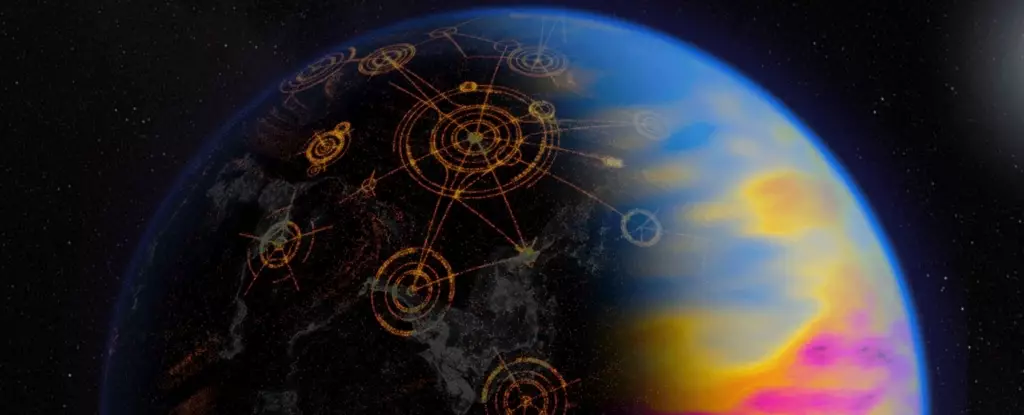The Milky Way galaxy is vast and old, leading scientists to believe that intelligent civilizations should be widespread throughout the cosmos. However, the question remains: where are they? According to a recent study, the answer may lie in the fact that alien societies could be so advanced that they are simply undetectable to us. This thought-provoking theory challenges the traditional notion of searching for extraterrestrial life and urges us to consider the possibility that we may not be able to perceive civilizations that have achieved a level of technological sophistication beyond our comprehension.
While conventional methods of searching for alien life involve looking for biosignatures such as methane in a planet’s atmosphere, the new study introduces the concept of technosignatures, specifically focusing on the detection of solar panels. Researchers simulated an Earth-like exoplanet with varying levels of solar panel coverage and investigated whether these panels could be identified from a distance of 30 light-years using advanced telescopes. Surprisingly, the results indicated that detecting highly advanced civilizations through this method is no easy feat. Not only would a significant portion of the planet’s land need to be covered with solar panels, but distinguishing the panels from background noise would require an extensive amount of observation time.
One of the key findings of the study was the inefficiency of using solar panels as a technosignature. While solar energy is a logical choice for powering a civilization due to the abundance of silicon and starlight in the universe, the study revealed that the energy generated by solar panels is incredibly efficient. In fact, the amount of land required to meet the energy needs of Earth’s current population with solar panels is minimal, making it unlikely that civilizations would devote a large percentage of their land to solar energy production. This poses a significant challenge in using solar panels as a method for detecting advanced extraterrestrial civilizations.
The implications of the study have major ramifications for the Fermi Paradox, which highlights the apparent contradiction between the high probability of intelligent life in the universe and the lack of concrete evidence for it. The idea that civilizations may not feel compelled to expand throughout the galaxy due to achieving sustainable population and energy levels, even with a high standard of living, challenges the conventional belief that advanced societies would spread far and wide. This new perspective raises the question of whether galaxy-spanning civilizations truly exist or if civilizations prefer to remain localized within their own stellar systems.
One of the most intriguing aspects of the study is its impact on the concept of Dyson Spheres, massive structures built around stars to harness their energy. While previously considered a potential explanation for anomalies such as the dimming of Tabby’s Star, the study suggests that such large-scale energy harvesting structures may be outdated in the face of technological advancements. The idea that civilizations may have evolved beyond the need for such grandiose projects challenges our assumptions about the future of space exploration and the potential capabilities of advanced alien societies.
The search for alien civilizations is a complex and ever-evolving endeavor that requires us to continuously reassess our methods and assumptions. The new study offers a fresh perspective on the challenges of detecting highly advanced extraterrestrial societies and prompts us to consider the possibility that alien life may be far more elusive and enigmatic than we previously imagined. As we continue to explore the mysteries of the cosmos, it is essential to remain open to diverse and unconventional approaches in our quest to unravel the secrets of the universe.


Leave a Reply